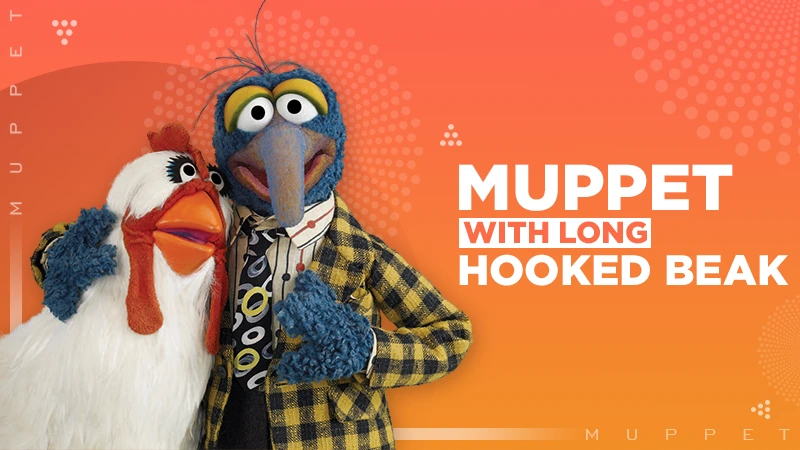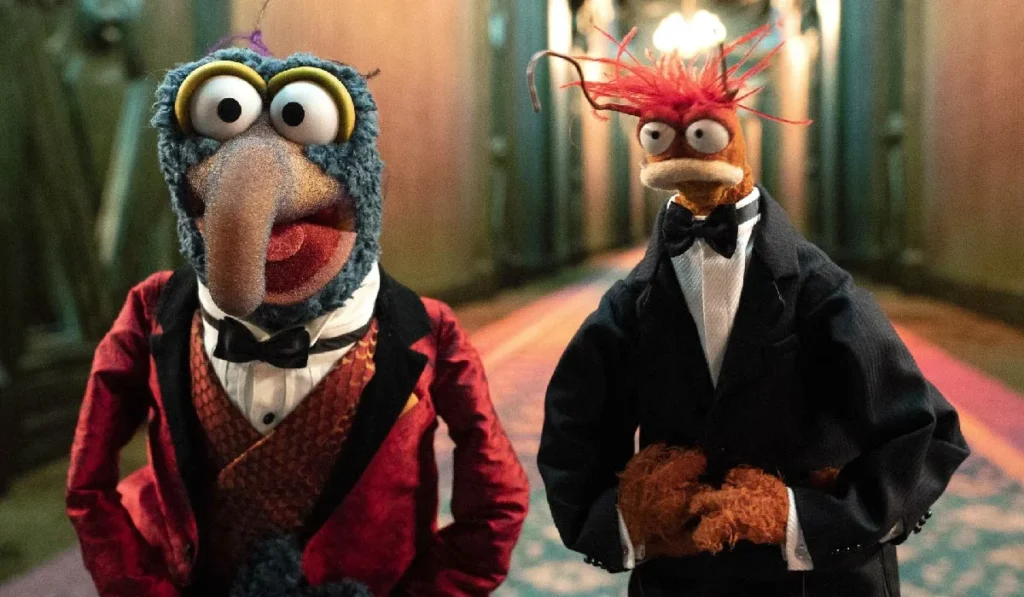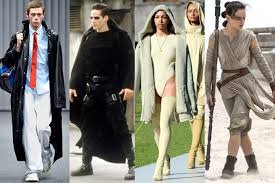
The world of Muppets has captivated audiences of all ages for decades. From their whimsical personalities to their unique designs, these puppets have made a lasting impact on both television and film. One of the most intriguing and memorable types of Muppets is the “Muppet with long hooked beak.” This character type, with its distinctiveappearance and quirky charm, stands out among the array of other Muppet creations. In this article, we’ll dive into the concept of a “Muppet with long hooked beak,” exploring its origins, significance, design, and the role it plays in the Muppet universe.
The Muppet with Long Hooked Beak: A Unique Design Element
What Defines a Muppet with Long Hooked Beak?
A “Muppet with long hooked beak” is a unique puppet character with an elongated, curved beak, often reminiscent of birds like pelicans, herons, or toucans. This beak is typically designed to be more exaggerated than those of other Muppets, drawing attention to the character’s distinctive features. The beak can serve as a visual cue, hinting at the personality traits of the character. These Muppets tend to have a strong, sometimes comedic presence due to the prominence of their beak, making them memorable and engagingfor viewers.
Early Appearances of Muppets with Long Hooked Beaks
While many people are familiar with iconic Muppet characters like Kermit the Frog or Miss Piggy, the “Muppet with long hooked beak” has also had its fair share of appearances. One of the earliest examples comes from Sesame Street, a show known for its broad array of colorful and creative characters. Several bird-like Muppets, including ones with long hooked beaks, appeared throughout the show’s long history. These characters were often used to portray certain humancharacteristics, such as stubbornness or curiosity, all while being visually striking thanks to their beaks.
The Iconic Characters Featuring Long Hooked Beaks
Animal from The Muppet Show
While not traditionally a “long hooked beak” character, Animal from The Muppet Show can be seen as a distant cousin to the idea of a Muppet with a long, exaggerated feature. Known for his wild, unpredictable nature and love for playing the drums, Animal’s physical traits — especially his unruly hair and wide mouth — make him a memorable Muppet. He shares a similar design principle with the “Muppet with long hooked beak,” where the exaggerated features play a role in emphasizing the character’s personality.
Big Bird from Sesame Street
Although Big Bird doesn’t technically have a long hooked beak, his character shares several design elements with the archetype. Big Bird’s long, yellow feathers and oversized beak make him one of the most recognizable Muppets in the world. His beak, while not as hooked as some other Muppet birds, shares the same fundamental purpose: to create a striking and memorable visual that matches his larger-than-life personality.
The Pigeon from Sesame Street
A perfect example of the “Muppet with long hooked beak” is the pigeon character from Sesame Street. With his long, hooked beak and comically exaggerated mannerisms, the pigeon is often seen in various humorous skits. The beak serves as a focal point of the design, underscoring the pigeon’s often mischievous or stubborn behavior. This character embodies the playful nature of Muppets while also demonstrating how a simple physical trait, like a long hooked beak, can enhance a puppet’s personality.
The Symbolism Behind the Long Hooked Beak
A Nod to Real Birds
The long hooked beak of certain Muppet characters often draws inspiration from real-world birds, such as herons, eagles, and pelicans. These birds, known for their distinct beaks, are frequently associated with traits such as patience, wisdom, or even cunning. When translating these characteristics into puppet form, the Muppet creators often exaggerate these features, making them stand out more. A long hooked beak, for instance, can symbolize a character’s sharp wit or their ability to get what they want through cunning strategies.
The Beak as a Tool for Expression
Muppets, like all puppets, rely on their physical features to communicate emotions and intentions. A long hooked beak can be a powerful tool for visual storytelling. The beak can be used for comedic effect — for instance, as an object that gets in the way or is awkwardly involved in a situation. It can also be a symbol of the character’s sharp, often biting nature, both literally and figuratively.
A Connection to the World of Birds
The beak also connects Muppets to the natural world, allowing the audience to draw parallels between the characters and real-life animals. The long hooked beak of some Muppets evokes an image of exotic birds or even prehistoric creatures, giving these characters an air of mystery and intrigue. This connection to nature can make these Muppets feel more grounded in reality, even though they live in the whimsical world of the Muppets.

Behind the Scenes: Designing the Muppet with Long Hooked Beak
The Craft of Muppet Design
Creating a Muppet with a long hooked beak is no simple task. The design process involves a combination of creativity, engineering, and craftsmanship. The puppet designers must ensure that the beak is not only visually striking but also functional. The materials used to craft the beak need to be lightweight enough for the performer to handle but sturdy enough to withstand the wear and tear of regular use.
The long hooked beak also needs to be flexible, allowing the performer to animate it with the appropriate movements. This often involves intricate puppet mechanics, ensuring that the beak moves in a natural way, whether it’s used for comedic effect or more dramatic purposes. This meticulous attention to detail is what makes Muppets with long hooked beaks so memorable and dynamic.
The Role of the Performer
Behind every Muppet is a talented performer who brings the character to life. The performer’s ability to control the puppet’s movements and interact with the beak is crucial to the success of the character. For a Muppet with a long hooked beak, the performer often uses the beak as an extension of their own body, making the beak an active participant in the character’s behavior.
For example, in scenes where the beak is used to interact with other characters, the performer may use it to punctuate speech or emphasize emotions. In other cases, the beak may simply be an aesthetic feature that adds to the overall design, allowing the performer to focus more on the puppet’s personality and interactions.
The Evolution of the Muppet with Long Hooked Beak
From Simple Puppets to Iconic Characters
The Muppets have evolved over the years, with characters like the “Muppet with long hooked beak” going through various design iterations. In the early days of Sesame Street and The Muppet Show, the characters were often simpler in design, with basic beaks or features. However, as Muppets became more sophisticated, so too did their designs. The long hooked beak became a more refined and deliberate feature, adding depth and complexity to the character.
Modern-Day Muppets
In modern Muppet productions, the long hooked beak continues to be a popular design choice. The character types may change, but the visual impact of a long hooked beak remains a defining feature. Whether the character is a supporting player or the star of a skit, the beak continues to serve as a symbol of distinctiveness and personality.
Conclusion: Why the Muppet with Long Hooked Beak Continues to Captivate
The “Muppet with long hooked beak” is more than just a puppet with a unique feature; it’s a representation of creativity, character, and storytelling. These Muppets, with their elongated beaks and striking appearances, continue to captivate audiences because they embody the spirit of what the Muppets stand for: imagination, humor, and heart. Whether they are playful, cunning, or wise, these characters remind us that in the world of Muppets, no feature is too small or insignificant to make a big impact.
As we look forward to future Muppet creations, there’s no doubt that the “Muppet with long hooked beak” will continue to inspire new generations of fans, reminding us of the power of design and personality in bringing puppets to life.


